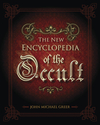Anglo-Saxon Futhorc

The runic alphabet of the Anglo-Saxon tribes, a coalition of Germanic peoples who invaded Britain in the fifth and sixth centuries of the Common Era and became the ancestors of the modern English. The Anglo-Saxon futhorc evolved out of the elder futhark by the addition of several new runes needed to express sounds not shared by other Germanic languages. Related changes shifted the sound value of the fourth rune to o and the sixth to c; thus the term "futhorc" is commonly used for this runic system, while "futhark" is used for those that retained the Old Germanic sound values.
Different versions of the Anglo-Saxon futhorc give different numbers of runes. The Old English rune-poem, the most detailed surviving source on the Anglo-Saxon futhorc’s symbolism, includes twenty-nine runes, while other sources from the north of England give up to thirty-three.


Like the other runic alphabets, the Anglo-Saxon futhorc went out of use with the coming of Christianity and the introduction of the Latin alphabet. It has been brought back into use in recent years by people in the modern Pagan revival, but so far has received much less attention than the elder futhark.
Excerpted from The New Encyclopedia of the Occult, by John Michael Greer

About John Michael Greer
Related Products

is subject to certain Terms and Conditions